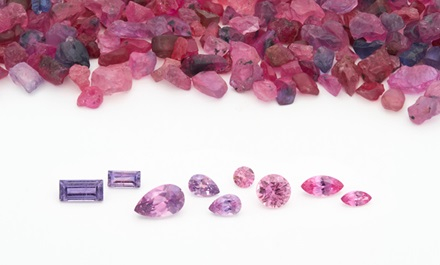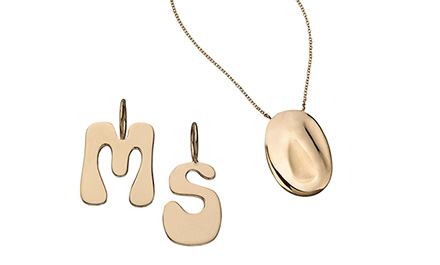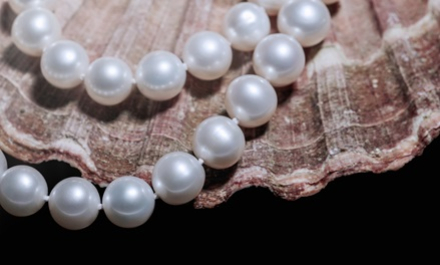This is an expanded and serialised version of the article that first appeared in the JNA January-February 2023 issue.
As JNA enters its fourth decade, it examines the market-shaping developments that will influence the course of the gem and jewellery industry moving forward – from evolving consumer priorities, emerging hubs and business strategies to technological advances, product innovation and the metaverse. Here is the second instalment.
6. Purchase drivers
A significant portion of jewellery sales are self-purchases, a segment that is likely to continue growing in the years to come. Consumers are buying jewellery to reward themselves for their successes, commemorate special events or simply select the item that best fits their style. Some couples are even shopping together for engagement rings, which may eliminate the element of surprise but guarantees satisfaction.
Self-expression is another driving force for jewellery sales, with more consumers seeking pieces that reflect their personality or symbolise their personal values. Jewellery that holds special meaning to the wearer or represents an idea, memory or relationship dear to them will likely win them over.
That said, there is no discounting life moments as motivating purchases. Engagements, weddings and even bridal parties will perennially spur jewellery sales. There is a reason why bridal is a top-performing category for many jewellery manufacturers, brands and retailers.
New occasions and traditions such as special jewellery gifts for newborns and children as well as significant rites of passage along with coming-of-age birthdays aside from the traditional debut at 18 could also yield retail opportunities.
And aside from the traditional retail peaks such as Lunar New Year, Christmas and New Year, Valentine’s Day, also worth preparing for are the commercial shopping festivals such as Double 12 and Double 11 (Singles’ Day), to name a few. Shopping cycles are even turning monthly, with e-commerce sites creating special promotions on double days like April 4, June 6 and August 8 among others.
7. New sales channels
Social media and livestreaming are the sales channels of tomorrow for young consumers and the young at heart.
Digital natives flock to social media for the latest trends and buys. Online jewellery shops on Instagram, WeChat and other Chinese social platforms have accumulated a steady supply of customers that grew even more during the digital days of the pandemic.
Where an online presence used to determine a brand’s digital savviness, today, this is the bare minimum. Social media not only transmits news of new products, collections, events to the consumers, it can be a tool for experiential retail, a channel for customer engagement and an interactive forum to gauge public opinion on one's brand or product.
Livestreaming likewise generates substantial sales, particularly in China where popular hosts and enticing products draw in shoppers.
8. KOLs and KOCs
Key Opinion Leaders (KOLs) and Key Opinion Consumers (KOCs) have become a powerful marketing strategy for brands and companies, thanks to their solid following.
New rules requiring disclosure for paid endorsements notwithstanding, KOLs and KOCs provide substantial brand awareness and recognition from target audiences in a world ruled by social media, celebrity endorsements and influencer marketing.
Where consumer opinion was once largely influenced by celebrities, experts and known leaders, the age of vlogs and social media has also spawned an army of content creators, all with their own niches and audiences. The everyday man – or woman – now shapes opinion, with the power to make or break products with a short compliment or criticism. Product placements or mentions in a popular content creator’s vlog or tweet can rake in sales.
Expertise and experience however still hold sway over public opinion. Fame is another charmer – and proven draw – hence brands’ decision to appoint actors and actresses, artists, singers and entertainers as ambassadors to help define and enhance their image in the market.
9. Alternative sources of funding
Grants, finance funds and even crowdsourcing campaigns have injected capital into the gem and jewellery industry, after the exodus of several banks in the last few years. Special loans using gemstones as collaterals also exist to provide financial support to the trade. Fintech companies likewise offer assistance.
Non-banking financing company Delgatto Diamond Finance Fund (DDFF) enables companies to access capital through physical collateral such as rough and polished diamonds – accounting for 60 to 65 per cent of the business – or high-value gems, high-end watches, and jewellery.
It recently partnered with Sarine Technologies Ltd to evaluate rough diamonds for collateral by using mapping technology. The Del Gatto 360 – Powered by Sarine service uses Sarine’s technological solutions to map, identify and evaluate rough diamonds. This enables DDFF to significantly raise the amount of capital it provides to the rough diamond sector and expand the types of structures it offers.
DDFF will assess if the rough diamond is eligible for financing, and at what level. Once financing is accepted, it will also offer the option to cut and polish the rough stone in its Dubai or New York cutting facilities.
UK jeweller Taylor & Hart has turned to Seedrs to raise funds for various expansion programmes and initiatives. Its most recent campaign in December 2022 brought in over GBP750,000 (around US$903,600) that will go towards the engagement ring specialist’s global expansion.
10. AI in the jewellery trade
Artificial Intelligence (AI) is powering diamond grading solutions, yielding faster and consistent results. Technology solutions providers and gem labs are putting the advantages that AI brings to full use in their grading products.
Sarine Technologies applies AI to a multitude of reports, services and systems for diamond solutions. It prides itself on its AI-based diamond grading and detection systems that yield highly accurate information and continually explores new applications and possibilities with machine learning. Sarine’s eGrading system extends beyond the 4Cs, providing vast diamond information, eliminates the need to send diamonds to a lab and allows buyers to source for specific stones.
Gübelin Gem Lab has unveiled AI-powered Gemtelligence, which uses machine learning to determine origin and treatment of coloured gemstones. Gemtelligence uses an algorithm based entirely on AI to determine the country of origin of rubies, sapphires and emeralds. It also recognises heat treatments in rubies and sapphires. According to Gübelin, the system ensures consistency and precision in the analysis of coloured gemstones, thereby enhancing security and building trust in the market.
AI is likewise revolutionising the jewellery retail sector by automating processes, enabling virtual try-on and visualisation services and facilitating bespoke and personalised functions.
View the first instalment of this series here.












